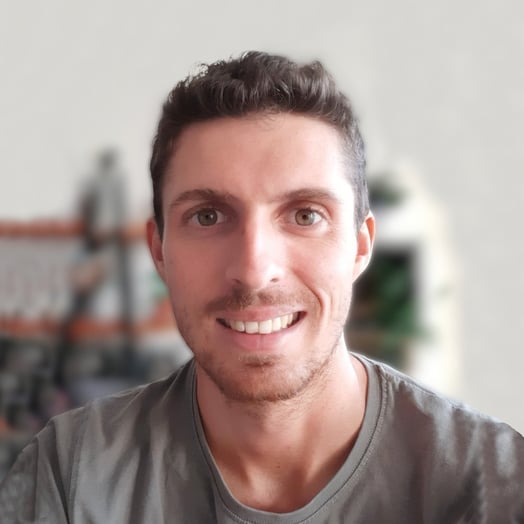
Pablo Mainar Jovaní
Verified Expert in Engineering
Machine Learning Engineer and Software Developer
Pablo is a machine learning engineer with 5+ years of experience in data analysis, statistics, and machine learning modeling. He has worked on various domains, including computer vision, audio processing, time-series forecasting, and human biosignals such as electroencephalography (EEG). Pablo is also skilled in Python and all data processing libraries such as NumPy, pandas, SciPy, PyTorch, and TensorFlow.
Portfolio
Experience
Availability
Preferred Environment
Python, PyTorch, Pandas, Linux, Windows
The most amazing...
...work I've done is related to mental state decoding from EEG, where I translated users' cognitive load by modeling their brain waves.
Work Experience
AI Software Engineer
Logitech
- Developed machine learning models to infer the mental states of users based on electrical brain activity sensors or EEG. Mental flow, cognitive load, and attention are some of the neuronal markers that I developed.
- Designed experiments to collect all kinds of biosignals and voices from subjects, resulting in more than 20 designed experiments with over 200 subjects recorded.
- Built and trained deep learning models for computer vision applications like improving the performance of a person's detectors using self-supervised learning. Increased accuracy from 70% to up to 95% while reducing the complexity of the model.
- Patented a hybrid speech recognition system where complex commands are processed in the cloud and simple commands locally in the device. Improved energy efficiency, speed, and privacy by a factor of 2.
- Created and trained a deep learning model for an objective speech quality metric. This model outperforms other available models while removing the need for a clean reference signal, which facilitates its usage.
- Supervised and mentored more than 15 interns, including master thesis students.
- Published my work at top-tier machine learning conferences like the International Conference on Acoustics, Speech, and Signal Processing (ICASSP), Interspeech, or IEEE Engineering in Medicine and Biology Society (EMBS) conference.
Deep Learning Intern
Technicolor
- Developed a deep neural network that generated the stereoscopic pair of a given monocular image.
- Scraped YouTube stereoscopic videos to build a dataset to train the model.
- Expanded the application to generate stereoscopic 360-degree panoramic images.
- Built a virtual reality application in Unity to feel the quality and sense the depth of the generated stereoscopic panoramas.
Experience
Hybrid Voice Command Processing
https://patentimages.storage.googleapis.com/7f/c5/88/804899f929e3bf/US20220406305A1.pdfA controller was designed to differentiate between simple voice commands, such as "play the next song," and complex commands, such as "play something from the Stones." Simple commands were processed on-device to improve availability, privacy, and battery life, while complex ones were sent to the cloud for more powerful processing.
I handled the technical development of the on-device STT—designing the model and training it on a limited vocabulary. I was also in charge of the controller deciding how to route the command. This required deep knowledge of speech processing, including the classical and more modern approaches for STT. The STT was developed in C++ for embedding in Raspberry Pi, and most of the experimentation was done in Python. A patent was filed based on this project.
Objective Speech Quality Metric
https://arxiv.org/pdf/2204.01345.pdfTraditionally, quality has been measured by asking a group of experts and averaging their opinions. In this project, we developed an automatic way of doing it based on a deep-learning model. We used crowdsourcing to collect a large dataset that we used—among other publicly available data—to train our model. This model is now in use in the production line of many audio products.
I led the project and supervised the student working on it. This included writing code for training the model and suggesting ideas to improve the performance. The model was written in Python using PyTorch. We participated in a speech quality metric competition at a top-tier scientific conference, and the model ranked among the best. The scientific paper can be found in the attached project URL.
Mental Flow Estimation Through EEG
https://mkegler.github.io/publication/cherep-2022/cherep-2022.pdfFlow is a mental state where the user is very focused and productive. We developed a deep neural model to predict the state of flow based on sensors placed on the scalp that measured electrical brain activity, known as EEG. This involved a big experimental design considering many confounding variables, data collection, data analysis, and modeling. All the coding was done in Python, including the experimental design—with the synchronization of all sensors—and modeling, which was done using TensorFlow.
I led this project and was responsible for the experimental design and the modeling. I also supervised the student working on the project, providing insights and suggestions on how to proceed. This project was published at the IEEE EMBS conference in 2022. The paper can be found in the attached project URL.
Education
Master's Degree in Electrical Engineering
EPFL - Lausanne, Switzerland
Bachelor's Degree in Telecommunications Engineering
Universitat Politecnica de Valencia - Valencia, Spain
Skills
Languages
Python, C++, C, Java
Libraries/APIs
Pandas, Scikit-learn, Matplotlib, PyTorch, TensorFlow, OpenCV, NumPy, SciPy
Paradigms
Data Science
Platforms
Linux, Windows, Arduino, Visual Studio Code (VS Code), MacOS, Raspberry Pi, Android, Docker
Other
Machine Learning, Deep Learning, Data Analysis, EEG, Audio Processing, Artificial Intelligence (AI), Software, Signal Processing, Digital Signal Processing, Time Series, Time Series Analysis, Coding, Programming, Neural Networks, Deep Neural Networks, Artificial Neural Networks (ANN), Experimental Design, Technical Project Management, Data Processing, Development, Research, EDA, Modeling, Data Engineering, Software Development, Statistics, Computer Vision, Image Processing, Microcontrollers, Embedded Systems, Electronics, Automatic Speech Recognition (ASR), Version Control, EEG Libraries for Python, Speech to Text, Hardware, Antenna Design, Data Collection, Technical Leadership, Crowdsourcing, Amazon Mechanical Turk, Data Analytics, Technical Project Monitoring, OCR, Natural Language Processing (NLP)
Frameworks
Unity, Android SDK
Tools
Kaldi, Scikit-image, MATLAB, Hidden Markov Model, Supervisor
Storage
Google Cloud
How to Work with Toptal
Toptal matches you directly with global industry experts from our network in hours—not weeks or months.
Share your needs
Choose your talent
Start your risk-free talent trial
Top talent is in high demand.
Start hiring